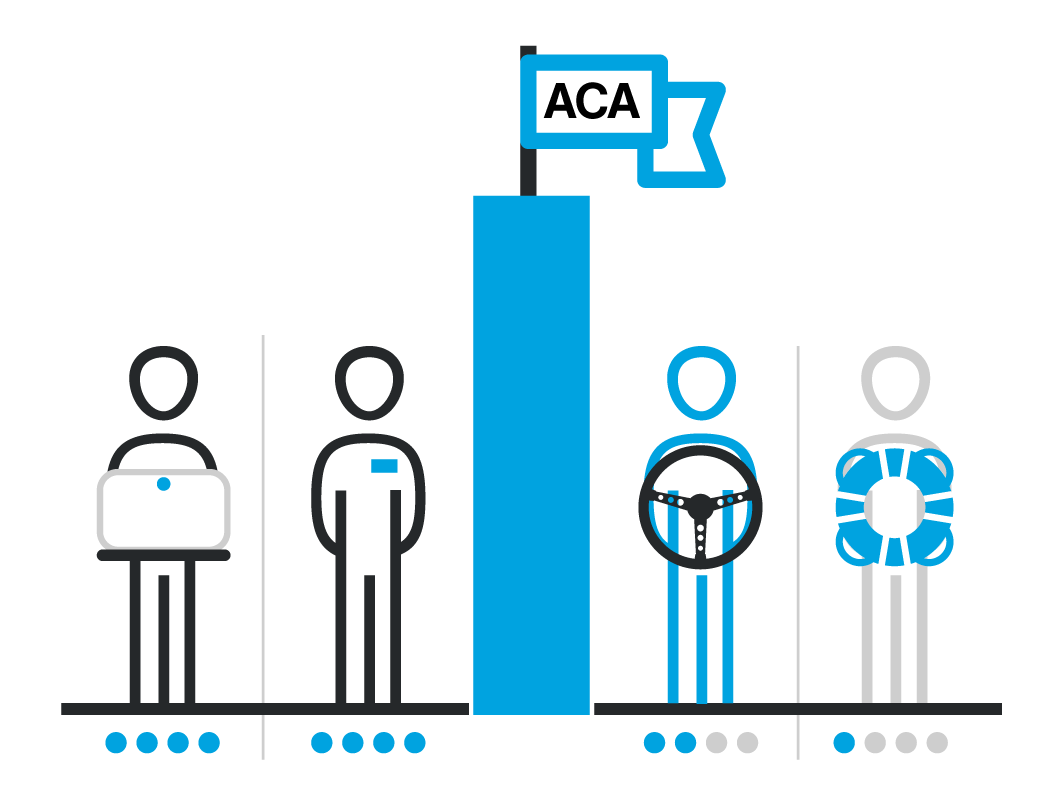With summer in full swing, it’s important to remain cognizant of the potential ACA compliance risks associated with the season.
The summer months mark a critical period for maintaining ACA compliance. While organizations and their employees gear up for vacations and well-deserved breaks, they must also ensure that they’re not overlooking the critical aspect of maintaining ACA compliance processes.
Neglecting your ACA responsibilities as an Applicable Large Employer (ALE) during the summer months, or falling prey to some of the unique aspects of summer employment that can lead to oversights and errors can lead to serious consequences.
Here we take a look at some best practices for avoiding these risks by putting in place ongoing ACA compliance efforts to ensure compliance year-round.
Remain Vigilant in Your ACA Compliance Efforts
Implementing an ongoing ACA compliance process can save time and money — and help organizations respond promptly to IRS Letter 226J penalty assessments. IRS Letter 226J is a letter used by the IRS to inform ALEs that they may be liable for an Employer Shared Responsibility Payment (ESRP). The determination of whether this liability exists is made by reviewing Forms 1094-C and 1095-C which have been filed by the ALE, as well as individual income tax returns filed by employees.
Because seasonal workers may be more commonly employed during the summer months in some industries (such as construction and hospitality), they represent another potential area of risk.
Seasonal Workers vs. Seasonal Employees
There’s an important distinction between seasonal workers and seasonal employees. It’s important for employers and their HR and benefits leaders to fully understand the distinction and account for these employees appropriately.
Getting this classification right could be worth thousands of dollars for your business.
A seasonal worker is an employee who performs work on a seasonal basis, tied to a certain time of year. For example, tourism, agriculture, or retail during busy holiday seasons. Seasonal workers aren’t considered full-time employees and are, therefore, generally not subject to the ACA’s employer shared responsibility provisions. However, seasonal workers are considered in determining whether an employer is an ALE.
Seasonal employees are employees who may work on either a part-time or full-time basis, but their employment is expected to last for six months or less. If a seasonal employee works full-time for more than six months, the ACA may consider them to be subject to requirements for coverage eligibility.
If your company uses the Look-Back Measurement Method to determine employee eligibility for benefits, you need to use it when accounting for your seasonal employees who will require an offer of healthcare coverage once they reach their initial stability period and average at least 130 hours of service each month.
Obviously, monitoring hours of service is another important record-keeping must do for ALEs.
Monitoring Hours and Classifying Workers
Accurately monitoring hours worked is always important, but it can become especially challenging during summertime’s often variable seasonal work schedules.
ALEs must diligently monitor hours of service to determine an employee’s full-time status under the ACA. Hours worked, including overtime and paid time off, should be accurately recorded and reviewed. Misclassifying employees can lead to penalties and potential legal ramifications.
The need to review time and attendance records for accuracy, especially during the summer season when employee schedules may be more varied, is especially critical due to vacations, flexible working hours and seasonal demands.
ALEs must review time and attendance records for accuracy, ensuring that all hours are properly documented — that’s important not only to ensure ACA compliance but also to ensure fair and accurate compensation for employees.
It’s also important to maintain accurate details about employees.
Maintaining Accurate Employee-Level Details
Organizations must ensure that all employee information like names, Social Security numbers, and dependents is accurately recorded and reported. Misreported data can lead to penalties and cause unnecessary difficulties in the event of an IRS audit.
The “five dimensions of data quality” can provide a useful guideline and framework for ensuring accurate employee data.
Extending Coverage Options Outside of Open Enrollment
While the annual open enrollment period is traditionally thought of as the timeframe where employees will be offered access to benefits, employee hire dates also come into play. Full-time employees must be offered benefits within 90 days from their date of hire.
That’s an ongoing requirement that ALEs must comply with to avoid unnecessary and avoidable risk.
Check Your Progress
Yes, summertime can be a risky time for ensuring ACA compliance. But it doesn’t have to be. By following the guidelines above and using tools like ACA Vitals to assess your ACA compliance risk, you can have the peace of mind and confidence you need to stay compliant with ALE requirements while enjoying some well-deserved fun in the sun.
Your ACA Vitals score will give you an indication of areas to focus on to address any potential problems that could result in IRS penalties.






